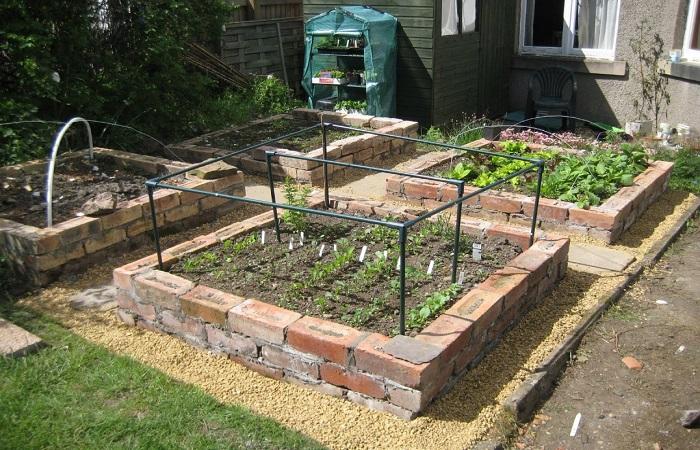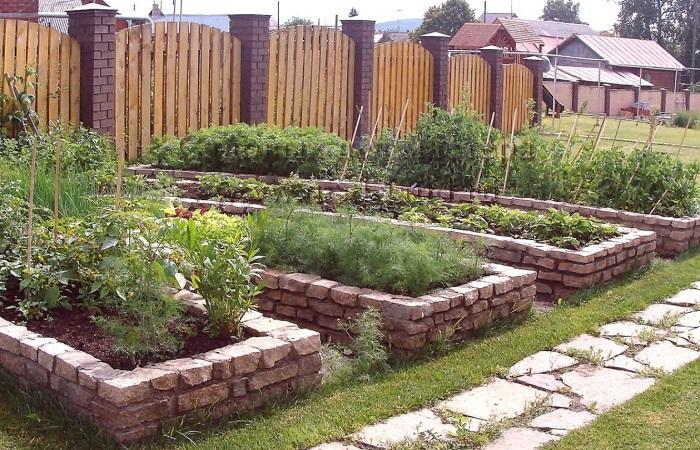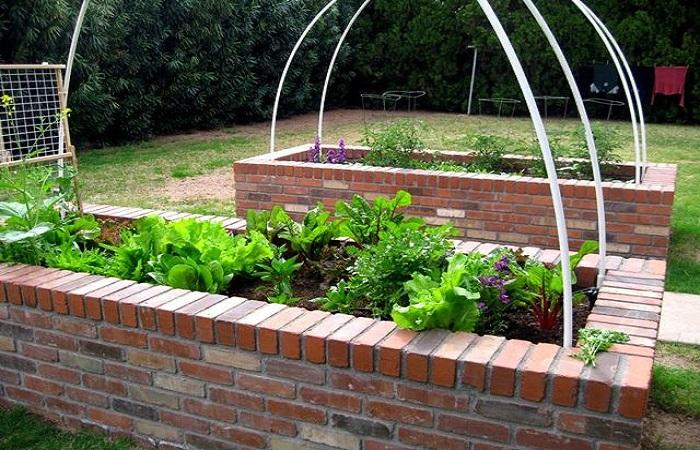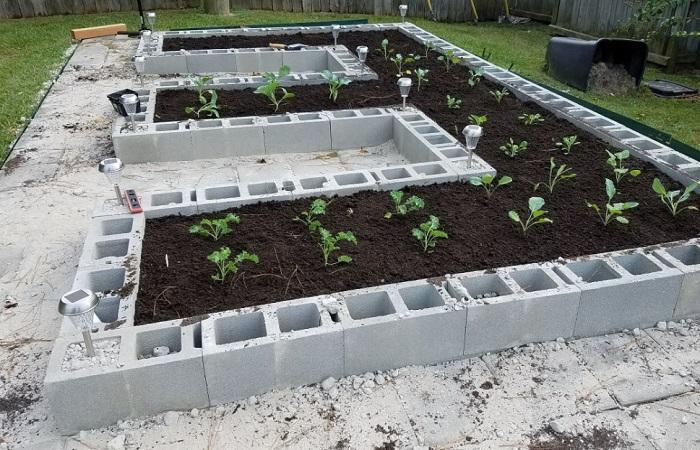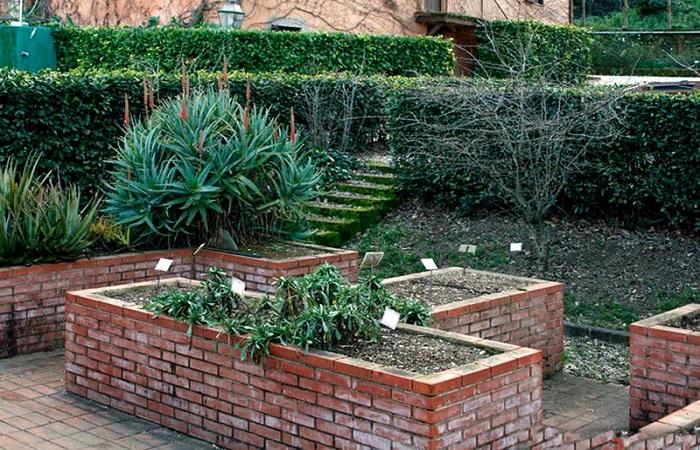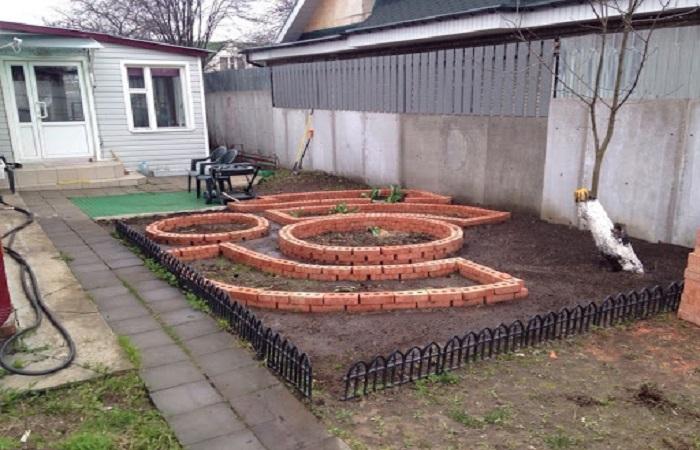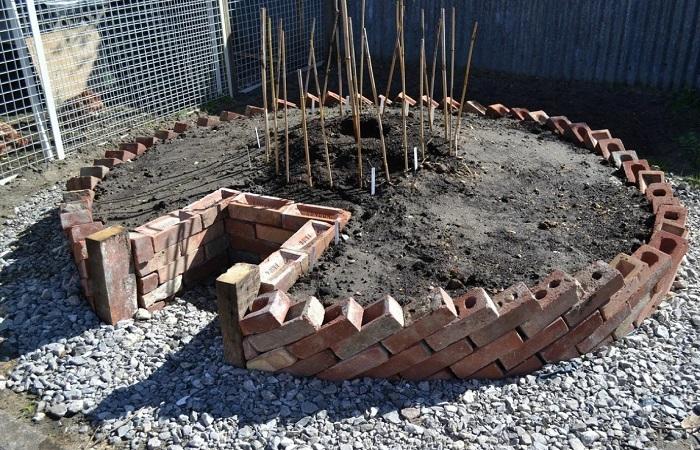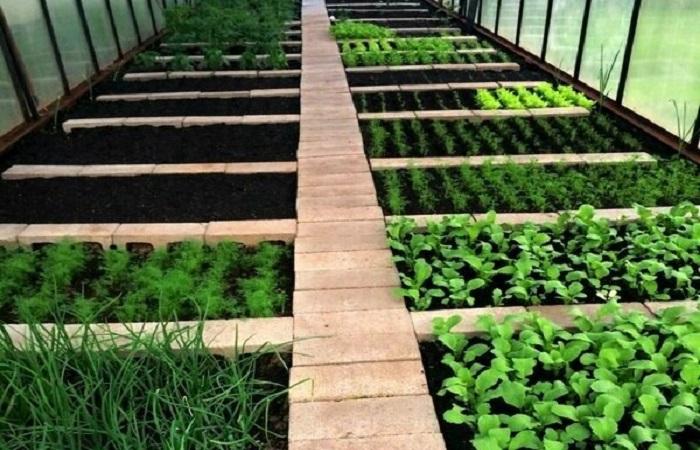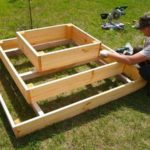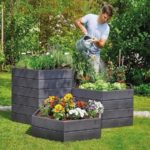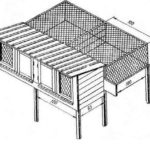The aesthetics of designing a flower garden or vegetable garden is no less important than practicality and ease of use. In this case, gardeners and gardeners have already managed to appreciate the advantages of rationally arranged beds made of red, silicate or decorative bricks. But they have their advantages and disadvantages that need to be taken into account at the design stage.
Specifics of brick beds
Brick beds are stationary, non-mobile devices, so before creating them it is necessary to take into account the fact that structures are built to last for many years.It will be simply impossible to move them to another place or make serious adjustments to the structure after some time.
Despite the fact that such structures look aesthetically pleasing, they are only suitable for a certain type of garden, vegetable garden or flower garden. This style is called regular, that is, built according to geometric rules. If you want to see your plot in a more relaxed, natural style, brick beds are not your choice.
In addition to the above, this is a costly undertaking. It is necessary to take into account the cost of the brick or stone itself, additional materials, as well as the work of erecting the structure and filling it with high-quality, often purchased, soil.
Advantages and disadvantages
Brick buildings have a number of advantages and disadvantages.
Positive aspects of building structures:
- Aesthetic appearance, neatness of a vegetable garden or flower garden. When watering, it is possible to keep the paths clean, and even frames make the composition clear and complete.
- Possibility of installation on soils unsuitable for agriculture, for example, on waterlogged lands, salt marshes, dense clay or sandy soils.
- Ease of processing. Brick structures are more or less raised above the ground, so it’s easier to care for plants without having to bend over too much. This will be appreciated by everyone, especially older gardeners and flower lovers.
- Protective functions. High brick sides partially protect planted plants from the negative effects of various pests, for example, snails and slugs, field mice, and if a dense metal mesh is provided in the lower part of the structure, then from rats, moles and mole crickets.
- Rapid warming of the soil in spring.
- Accelerated water drainage during excessive watering or prolonged rainfall.
- Ease of caring for plants: they are easier to water, feed, weed, tie up and treat with pesticides.
However, some advantages of brick beds may also be their disadvantages:
- Construction costs. Before you start, you need to calculate the cost of building materials and work. If you plan to make many structures, the project will be expensive.
- The inability to quickly and without additional costs change the purpose of occupied areas. If they decide to plant a garden or build a house in their place, they will first have to move perennial plants, dismantle stationary structures and remove construction waste. And these are considerable time, physical and financial costs.
- The elevation above ground level ensures rapid drainage of water and this also leads to accelerated drying of the soil in the beds, requiring more frequent watering.
- The limited volume of soil in the garden bed requires frequent fertilizing with mineral and organic fertilizers.
- While repelling some rodents and insects, slugs, brick beds attract cats who like to set up a toilet there, which obviously does not contribute to the rapid growth of flowers and vegetables.
Choosing whether or not to make brick beds must be done extremely thoughtfully and meticulously, taking into account all the pros and cons of such structures for a specific situation and site.
Types of beds
Brick beds can have almost any shape - from simple geometric to complex fantasy. The simplest and most popular designs are rectangular in shape. They are practical, uncomplicated, great for growing vegetables, herbs, herbs and salads, as well as low-growing berries such as strawberries and wild strawberries.
For flower beds, curly shapes are often chosen - circles, ovals, curved structures consisting of one or several beds. Everything here is connected with the imagination, desire and capabilities of the customer.
Also, using brick or other materials, you can simply lay out the frame of the beds, practically without raising them above ground level. Such fences not only prevent the growth of plants, but also do not allow irrigation water and dirt to flow onto the paths, dirtying them.
How to make brick beds with your own hands?
Making beds from brick, wild or artificial stone or other materials is quite possible for a person who knows how to handle tools and has knowledge of construction.
High
To create high beds made of brick, the shape of the future structure is marked on the selected area. A small foundation up to 30 centimeters deep is dug, at the bottom of which sand drainage is laid in a layer of 10 centimeters. If the soils are too permeable, for example sandy, you can make a thin “castle” from rich clay. It will not allow irrigation or rainwater to immediately flow into the sand.
Lined with bricks
These are the simplest brick beds in terms of design, cost and construction.For them, a shape is beaten out using pegs and twine; the soil can be removed a little, especially if it is not of very high quality, and sprinkled with fertile soil mixture. A shallow groove is dug under the sides. The frame can be laid with bricks in the form of inclined elements without fastening with mortar, or you can build a low wall of one or two bricks using the usual masonry technology with ligation. In this case, laying reinforcement is not required.
Curly
To create such brick beds, you will need to create a plan on which not only the outlines of the future structure will be drawn, but also all the dimensions will be calculated.
Then, according to this plan, the outlines in proportions are transferred to the land plot. The work is almost identical to the construction of raised beds, with the exception of the height of the structure itself, although sometimes flower beds are built with differences in height to emphasize the choice of plants, sizes and colors.
In the greenhouse
Brick beds here are erected along the structure; if there is free space, it is possible to do this in 2-5 rows. When growing tall plants, it is necessary to provide hooks for fastening and gartering, as well as paths for servicing the plantings.
Possible mistakes
When making and operating brick beds, the following errors and shortcomings are possible:
- Excessive width of beds. The ground cannot be trampled in them, so the width of the structure should not exceed 120 centimeters.
- The approach to the garden bed is from one side only. It is necessary to treat the surface and care for plants from all sides.
- Lack of drainage. On dense soils, moisture will stagnate, and on sandy and loose soils it will quickly go into the subsoil layer.
- Lack of protection from moles, mice or rats if there are pests on the site.
- Increased attention to the aesthetic side at the expense of the practicality of the design.
If brick beds are carefully thought out and rationally arranged, they will last for decades and will bring a lot of pleasure to both the plants and the gardeners and flower growers themselves.

